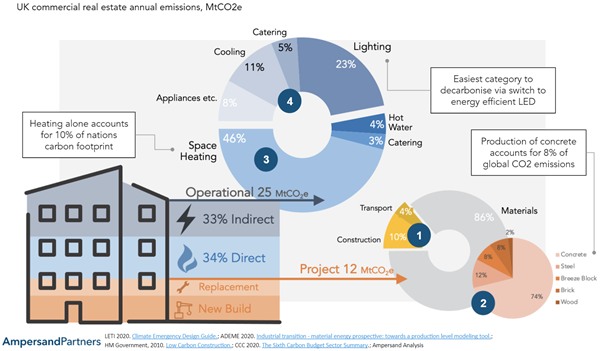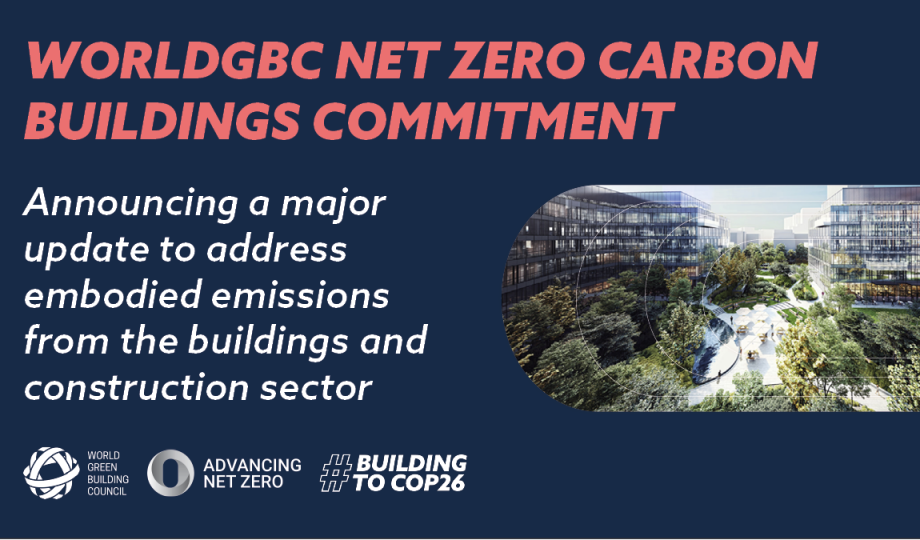Eco-Friendly Innovations in Construction: A Focus on Sustainable Materials
As the world becomes increasingly aware of the need to address climate change and reduce carbon emissions, the construction industry has a critical role to play in promoting sustainability. One of the most important ways in which the industry can achieve this is by utilizing sustainable materials in construction projects. Sustainable materials are those that are eco-friendly, non-toxic, and have a minimal impact on the environment.
From renewable resources such as bamboo and hemp to recycled materials like glass and plastic, there are a variety of sustainable materials available in the market. These materials not only help to reduce waste and promote sustainability, but they also offer a range of benefits such as improved air quality, enhanced thermal performance, and increased durability.
By incorporating sustainable materials into construction projects, builders can take a significant step towards reducing their carbon footprint and promoting a greener building industry. In this article, we will explore different types of sustainable materials, their advantages, and the latest innovations in the field.
Key Takeaways
- Sustainable materials are eco-friendly, non-toxic, and have minimal impact on the environment
- Renewable resources such as bamboo and hemp and recycled materials like glass and plastic are examples of sustainable materials
- Using sustainable materials in construction can reduce waste, improve air quality, enhance thermal performance, and increase durability
Understanding Sustainable Construction Materials
In today’s ever-growing environment of eco-consciousness, it is essential to understand sustainable construction materials, including the use of renewable resources and environmentally friendly materials. Sustainable materials are materials that have a minimal impact on the environment and contribute to a greener building industry. The benefits of sustainable materials include a reduction in carbon emissions, improved indoor air quality, and reduced waste.
It is important to consider the life cycle of materials when selecting sustainable options. This means considering the material’s impact from production to disposal. Sustainable materials are often made from renewable resources, such as bamboo, cork, and hemp, which have a minimal impact on the environment. Additionally, using environmentally friendly materials such as those made from recycled content, contributes to reducing the amount of waste that ends up in landfills.
| Material | Description | Benefits |
|---|---|---|
| Bamboo | A fast-growing and renewable grass | Durable, pest-resistant, and moisture-resistant |
| Cork | Harvested from the bark of cork oak trees without harming the tree | Fire-resistant, hypoallergenic, and an excellent insulator |
| Hempcrete | A mixture of hemp fibers and lime, used for insulation and construction | Highly sustainable, lightweight, and offers excellent insulation |
Incorporating sustainable construction materials in building projects is a vital step towards a more sustainable future. Adopting these materials benefits both the environment and the well-being of the occupants of the building. By using materials made from renewable resources, minimizing waste, and reducing carbon emissions, the construction industry can make a significant contribution to global efforts to combat climate change.

Exploring Green Building Materials
Green building materials are becoming increasingly popular in construction projects, as they offer a sustainable alternative to traditional materials. Incorporating environmentally friendly materials into construction processes promotes sustainable practices and reduces the negative impact on the environment.
Sustainable packaging materials, for example, can significantly reduce the amount of waste produced during a construction project. By using materials that are designed to be reused or recycled, the need for single-use plastics and other non-biodegradable materials is minimized.
Recycled materials are another type of green building material that is gaining popularity in the construction industry. This includes materials such as recycled metal, glass, and plastic, which can be used to create new products whilst reducing the amount of waste that ends up in landfills. Additionally, the use of recycled materials can save energy and reduce carbon emissions associated with the manufacturing process of new materials.
| Examples of innovative and eco-friendly building materials: |
|---|
| Bamboo: A fast-growing and renewable resource that can be used for flooring, furniture, and structural components. |
| Mushroom-based materials: These materials are made from the vegetative part of mushrooms and can be used to create biodegradable packaging materials and insulation. |
| Plant-based insulation: Materials such as cotton, wool, and hemp can be used for insulation and offer a sustainable alternative to traditional materials such as fiberglass. |
It’s important to note that the use of green building materials is not only beneficial for the environment but can also improve the health and well-being of the building occupants. This is because many traditional materials contain harmful chemicals that can negatively impact air quality and overall health.
Image: 
“Green building materials are becoming increasingly popular in construction projects, as they offer a sustainable alternative to traditional materials.”
Advantages of Eco-Friendly Products
Switching to sustainable materials is not only more environmentally friendly, but it also has numerous benefits for those involved in the construction process. First and foremost, the use of eco-friendly products can significantly reduce the overall environmental impact of a construction project. This includes reducing carbon emissions, conserving natural resources, and minimizing waste.
Furthermore, the use of biodegradable materials can greatly reduce the amount of waste generated by construction projects. These materials can break down naturally over time, reducing the amount of waste sent to landfills and promoting sustainability. In addition, sustainable materials can also contribute to improved health and well-being for those working on and living in the constructed environment.

By utilizing sustainable materials, construction professionals can create buildings that are healthier and more comfortable to be in. This can have a direct impact on the well-being of those who spend time in these buildings, improving productivity and overall quality of life.
In summary, the advantages of using eco-friendly products in construction are clear. By reducing environmental impact, minimizing waste, and improving health and well-being, sustainable materials are the way forward for a greener and more sustainable future.
Innovations in Sustainable Materials
The use of sustainable materials in construction has led to the development of innovative and eco-friendly products that can be used in a variety of applications.
One such innovation is the use of bamboo as a building material. Bamboo is a fast-growing, renewable resource that can be harvested without damaging the environment. It is also incredibly strong and durable, making it an ideal choice for construction projects.
Another example is the use of recycled plastic in building materials. Recycled plastic can be used to create a variety of products, including decking, fencing, and roofing materials. Not only does this reduce waste, but it also prevents the production of new plastic materials.
Additionally, sustainable packaging materials have become increasingly popular in the construction industry. These materials are made from biodegradable or compostable materials, reducing waste and promoting sustainability.
The development of these and other innovative sustainable materials is driving the growth of the green building industry, providing builders with a wide range of eco-friendly options for their projects.

As manufacturing processes continue to evolve, it is likely that we will see even more advancements in sustainable materials in the future. These innovations are crucial in meeting the growing demand for greener building practices and reducing the environmental impact of the construction industry.
The Role of Sustainable Materials in Future Construction
As the world becomes more aware of the impact of construction on the environment, the demand for sustainable materials is growing. The sustainability of materials is becoming just as important as their cost and durability.
The use of sustainable materials can have a significant impact on reducing carbon emissions and promoting a greener building industry. From the use of renewable resources like timber and bamboo to the incorporation of recycled materials such as steel and glass, there are many ways that sustainable materials can be used in construction to reduce environmental impact.
One of the main advantages of sustainable materials is the ability to reduce waste. Biodegradable materials like bamboo and cork are a great alternative to traditional materials like plastics and concrete, which take centuries to break down. Sustainable materials also have the potential to improve health and well-being by reducing pollutants and improving air quality inside buildings.
Renewable Resources
The use of renewable resources is a key aspect of sustainable construction materials. Timber and bamboo are two examples of renewable resources that can be used in construction. These materials are grown and harvested sustainably, making them a great alternative to traditional materials like steel and cement, which are energy-intensive and contribute to carbon emissions.
Timber is a popular choice for building structures because it is renewable, cost-effective and easy to work with. Timber structures also have a low carbon footprint, as the carbon dioxide absorbed by the tree during its lifetime remains stored in the wood, even after it has been harvested.
Bamboo is another renewable resource that is becoming increasingly popular in construction. It is a highly sustainable material, as it grows quickly and can be harvested multiple times without the need for replanting. Bamboo is also strong, durable and aesthetically pleasing, making it a great alternative to traditional materials like steel and concrete.
Recycled Materials
The use of recycled materials is another way to promote sustainability in construction. Materials like steel and glass can be recycled and repurposed, reducing the amount of waste that ends up in landfills. Using recycled materials also reduces the need for raw materials, which can help to conserve natural resources.
Sustainable packaging materials like cork and mushroom-based materials can also be used in construction. These materials are biodegradable and have a low environmental impact, making them a great alternative to traditional materials like plastic and Styrofoam.

Advancements in Sustainable Materials
Advancements in manufacturing processes have led to the development of new eco-friendly products, such as green concrete made from recycled materials and sustainability-focused insulation. By using sustainable materials in innovative applications, the construction industry can continue to evolve and reduce its impact on the environment.
As the demand for sustainable materials grows, more companies are investing in research and development to create new and innovative materials. This will help to create a more sustainable future for the construction industry, reducing waste and promoting a greener, more sustainable world.
Conclusion
In conclusion, the use of sustainable materials in construction has become more important than ever. Adopting eco-friendly innovations and utilizing green building materials can have a significant impact on reducing carbon emissions and promoting sustainability.
As we continue to face global challenges such as climate change and resource depletion, it is crucial that we prioritize the use of renewable resources and environmentally friendly materials. The construction industry has a responsibility to reduce its impact on the environment, and incorporating sustainable materials into building projects can help achieve this goal.
We encourage builders, architects and designers to consider the benefits of sustainable materials in their upcoming projects. From recycled materials to biodegradable products, the market offers a wide range of innovative and eco-friendly building materials to choose from.
Let us all work together to create a greener future for generations to come.
FAQ
Q: What are sustainable materials?
A: Sustainable materials are materials that are produced using methods and resources that have minimal impact on the environment. They are often made from renewable resources and can be recycled or reused at the end of their life cycle.
Q: Why should I use sustainable materials in construction?
A: Using sustainable materials in construction helps reduce the environmental impact of buildings. They promote energy efficiency, reduce waste, and contribute to a healthier and more sustainable future.
Q: What are some examples of sustainable materials?
A: Some examples of sustainable materials include bamboo, recycled steel, reclaimed wood, and recycled plastic. These materials are durable, renewable, and have a lower carbon footprint compared to traditional building materials.
Q: How do sustainable materials benefit the environment?
A: Sustainable materials help reduce carbon emissions, conserve natural resources, and minimize waste generation. They also promote biodiversity and support a more sustainable ecosystem.
Q: Are sustainable materials more expensive?
A: While sustainable materials may have a higher upfront cost, they often provide long-term cost savings through energy efficiency and reduced maintenance needs. Additionally, their environmental benefits outweigh the initial investment.
Q: Where can I find sustainable materials for my construction project?
A: Sustainable materials can be found through various suppliers specializing in eco-friendly products. It is important to do research and choose reputable suppliers who prioritize sustainability.
Q: Can sustainable materials be used in all types of construction projects?
A: Yes, sustainable materials can be used in a wide range of construction projects, from residential buildings to commercial structures. They offer versatility and can meet the requirements of different building designs and functions.
Q: How can I ensure the quality of sustainable materials?
A: To ensure the quality of sustainable materials, it is advisable to look for certifications and labels that indicate their compliance with environmental standards. Additionally, consulting with experts and professionals in the industry can provide valuable guidance.








